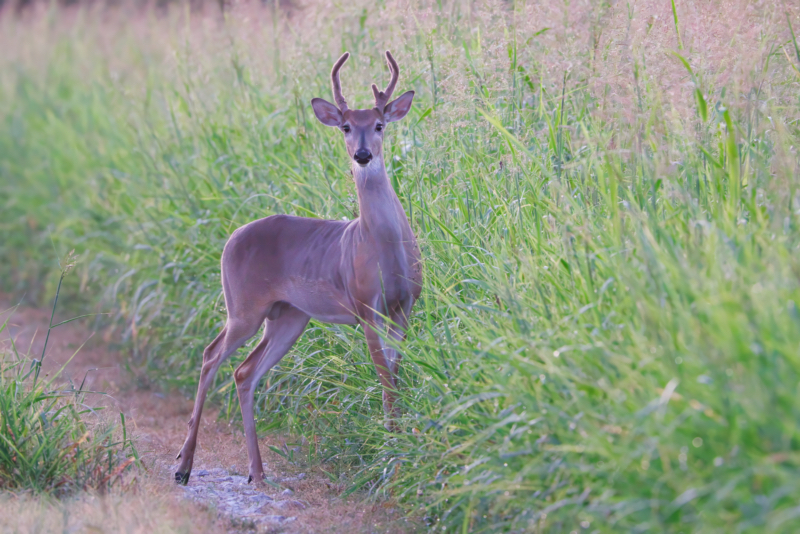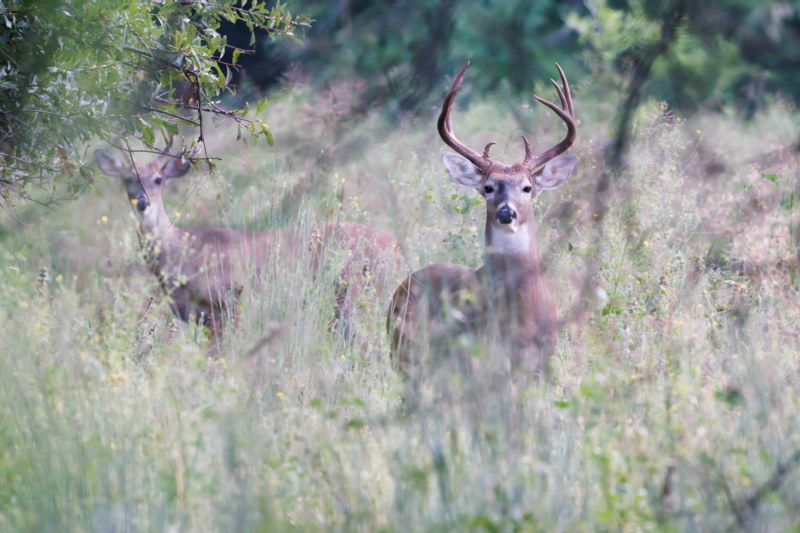This past Sunday, September 10, 2023, I was at the Sequoyah National Wildlife Refuge in Oklahoma doing my usual early morning wildlife photography. As daylight broke, I started driving the auto tour road when I noticed a young white-tailed buck near the road feeding on corn. What immediately caught my eye was that this buck still had velvet on its antlers, though I could see an area where a strip of the velvet appeared to be missing. This told me the buck would likely start removing its velvet completely very soon. After snapping a photo of the buck, I noticed another nearby that also still had velvet, with no signs yet that it was ready to remove it. I quickly took a picture of that one too.



A few minutes later, deeper in the brush, I spotted a more mature buck that had already fully removed all its velvet. This process of bucks shedding their velvet typically takes place in late August through September as testosterone levels rise and the blood supply to the antlers decreases. The velvet tissue dies and starts to peel off. The change in this buck’s antlers tells me the other young bucks will likely all have their velvet off soon. Once the velvet is gone and antlers are hardened, rutting and mating behaviors really kick into high gear. I feel fortunate to have captured these white-tails in that short transitional window when some have velvet and some don’t. It’s one of my favorite times to observe and photograph them.
Steve Creek, Wildlife Photographer
Equipment Used:
- Camera: Canon EOS R5
- Lens: Canon RF 100-500 mm F4.5-7.1 L IS USM
Technical Details: First Photo
- Location: Sequoyah National Wildlife Refuge (Oklahoma)
- Date and Time Taken: September 10, 2023 (06:55 A. M.)
- Program Mode: Manual
- Aperture: f7.1
- Shutter speed: 1/250
- ISO: 8000 (Auto)
- Exp. Comp.: 0
- Focal Length: 500 mm
